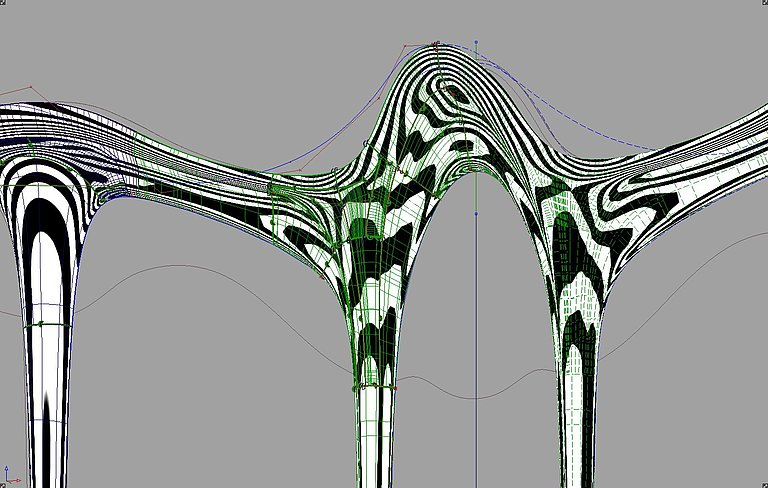The future is organic
People’s fascination with natural forms is not a new phenomenon. Architects and designers have always been inspired by nature. Whether simple organic, or biomorphous forms that resemble cell or plant structure, natural forms are becoming more and more popular in contemporary design. The naturally curved shapes are both appealing and harmonious. An early example and one that still appeals to people across the world is Gaudi’s Sagrada Familia in Barcelona. It is no surprise that such curved shapes are now finding their way into contemporary architectural projects and yacht interiors. Deutsche Werkstätten have the skills and engineering competence required to recreate these aesthetic surfaces in large scale interior spaces. A recently completed yacht interior is a good example of how a carefully engineered surface with effective lighting can create the desired porous structure and, in this case, resemble a sparkling grotto. The production requires state-of-the-art engineering technologies that provide maximum stability with the minimum use of materials.
Tobias Kandt, Product Developer at Deutsche Werkstätten, sees great potential for the company in this innovative field. He recognises the importance of being at the forefront of technical advancement and makes it his business to keep up with the latest technologies and key partners, actively developing contacts with the relevant specialists and research institutes. He knows success is only possible when various disciplines work together, including architectural design, material science, structural engineering, data processing, 3D modelling and digital manufacturing processes.
Editorial note: This article was published in 2020.
![[Translate to Englisch:] Die Natur bietet abwechslungsreiche organische Formen, die häufig als Inspiration dienen. © shutterstock Holzwirbel sind spannende organische Formen.](/fileadmin/_processed_/6/2/csm_shutterstock_114087232_ryan_deberardinis_gekauft_7d8bcc97ad.jpg)
![[Translate to Englisch:] Die Natur bietet abwechslungsreiche organische Formen, die häufig als Inspiration dienen. © shutterstock Holzwirbel sind spannende organische Formen.](/fileadmin/user_upload/symbolbilder_stockfotos/shutterstock_114087232_ryan_deberardinis_gekauft.jpg)
